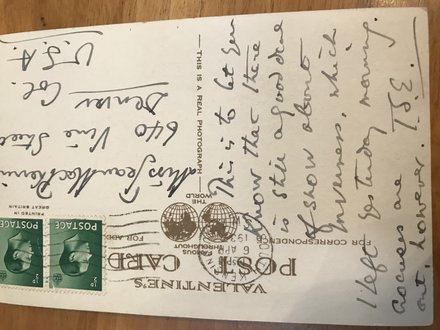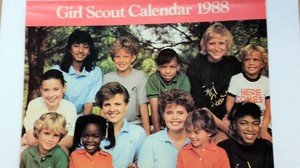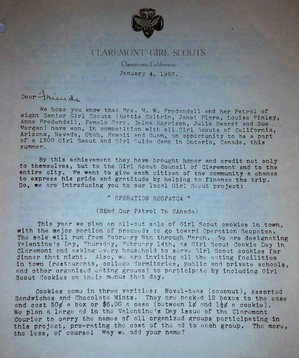On April 28, 1883 a letter was published in the Canadian periodical the British Whig titled “A Plain Statement.” The anonymous letter, signed simply “Western Settler,” warned Canadians interested in settling in Southern California to be wary of accounts of how prosperous the land is. He states that water scarcity is a huge problem and that “the land is worth nothing without water, and there is nothing more than two thirds enough for the lots sold” in Etiwanda and Riverside. The writer states “This is not a paradise by any means.
Riverside is a beautiful place and the climate is unsurpassed by any other. It is a fine place for a person with money seeking a pleasant home, apart from the profits of agriculture.” He is concerned that new settlers, drawn by the good things being said about Southern California, will come to the area seeking easy investment opportunities. On the contrary, he states that many of the crops, including orange trees, have failed during this season and that “the orchards will not pay this year.” The letter concisely discourages anyone to settle in Riverside and Etiwanda.
The Chaffey brothers were quick to respond. 1883 marked an important year for the Chaffeys as they generated momentum for settlement in the Inland Empire. Etiwanda, in particular was a key colony for the Chaffey brothers, along with Ontario. Many of the letters sent during these years are dedicated to encouraging and convincing people that Southern California is a prosperous place to live and work. Their company, and in fact their lives, depended on people purchasing land from them in places like Etiwanda and
Riverside. A letter like “A Plain Statement,” published in a widely read publication like the British Whig could be extremely detrimental to the Chaffey brothers.
On May 15, 1883, less than a month after the letter was published (remember, this is a time before email, when information moved slower), William Henderson wrote a lengthy letter to the editor of the British Whig regarding the letter. Immediately William Henderson calls out the anonymity of the letter as evidence that the writer is “evidently ashamed of his work.” William Henderson calls the claims basely false but that because of
the periodical’s “wide circulation and general good reputation” readers might believe the statement uncritically.
William Henderson refutes the idea that people buying the land are participating in risky speculation, stating that many people are buying the land in small parcels for homes and farms, turning it into a proper city. In fact, Etiwanda, one of the cities the “Western Settler” is most critical of, has a school, a church, a store, and a hotel. This is especially impressive given only a year ago the area had been completely undeveloped.
Next, William Henderson addresses the water scarcity topic as well as the claim that crops are unsuccessful. He categorically refutes any statement that says water is a problem in the Chaffey Brothers’ properties. He writes, “The water rights of Ontario and Etiwanda are among the best in Southern California. The amount of water given with the land is definite and the supply is greater than that used in some of the most prosperous settlements of this favored region.” He continues by stating that claims against the viability of the crops planting in the region are failing. William Henderson refers to several farms that have made money through the various fruit trees and crops.
William Henderson ends the letter undermining the validity of the “Western Settler,” calling him a lazy and indolent instigator. He presumes that the writer of “A Plain Statement” was an unwise investor that settled in a different part of Southern California that experienced problems and that now he is generalizing inappropriately. He reiterates that the anonymous nature of the letter is suspicious, perhaps if the letter writer has attributed his name, the “Western Settler” would be revealed to be an unreliable source of information. William Henderson encourages the letter writer to “back up his statements, let him come forward like a man, and face the music instead of sneaking behind an assumed name.”
It’s no surprise that the Chaffey brothers would want to act fast and aggressively towards anyone who is critical of their business plan. It is interesting to read this publication and the following letters as history unfolds page by page, letter by letter.





